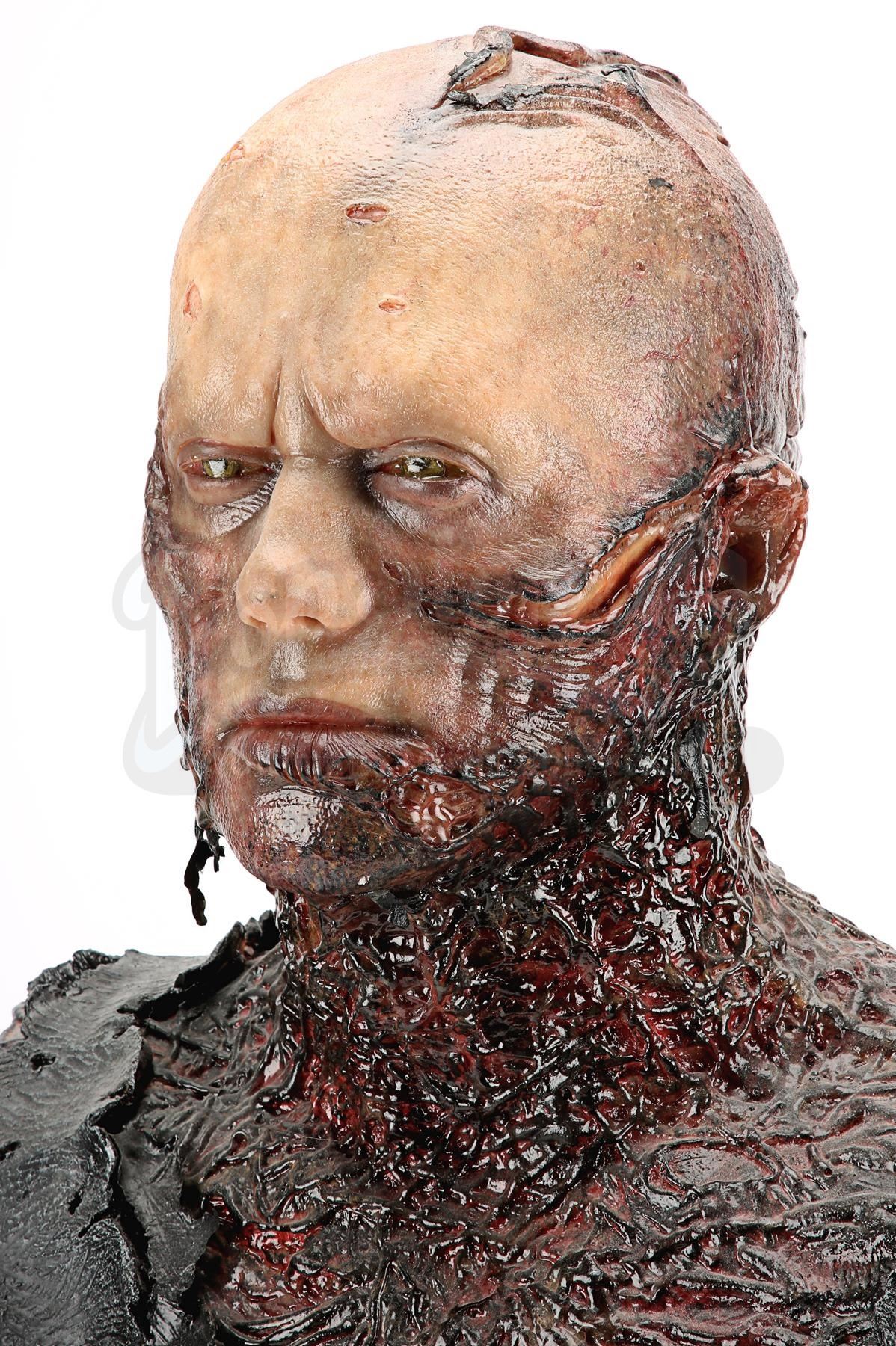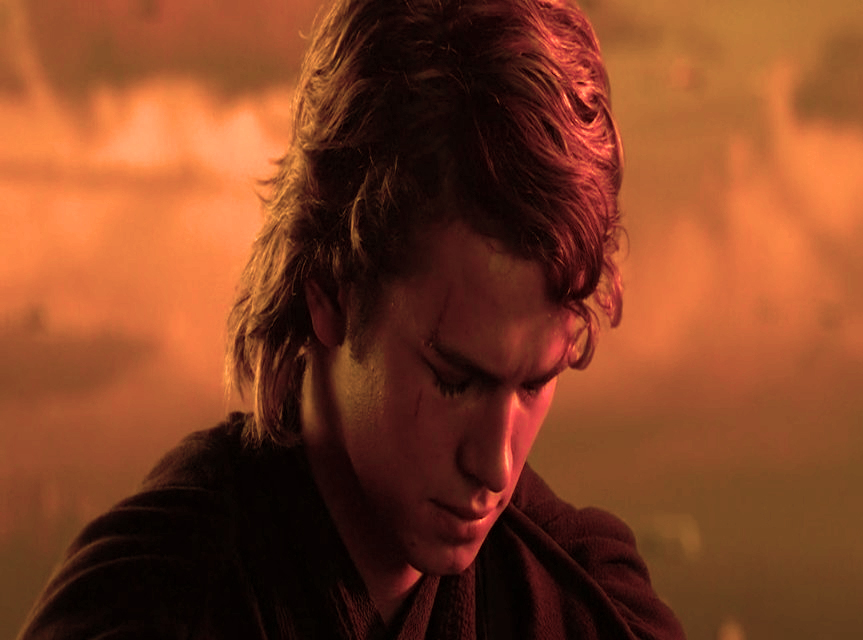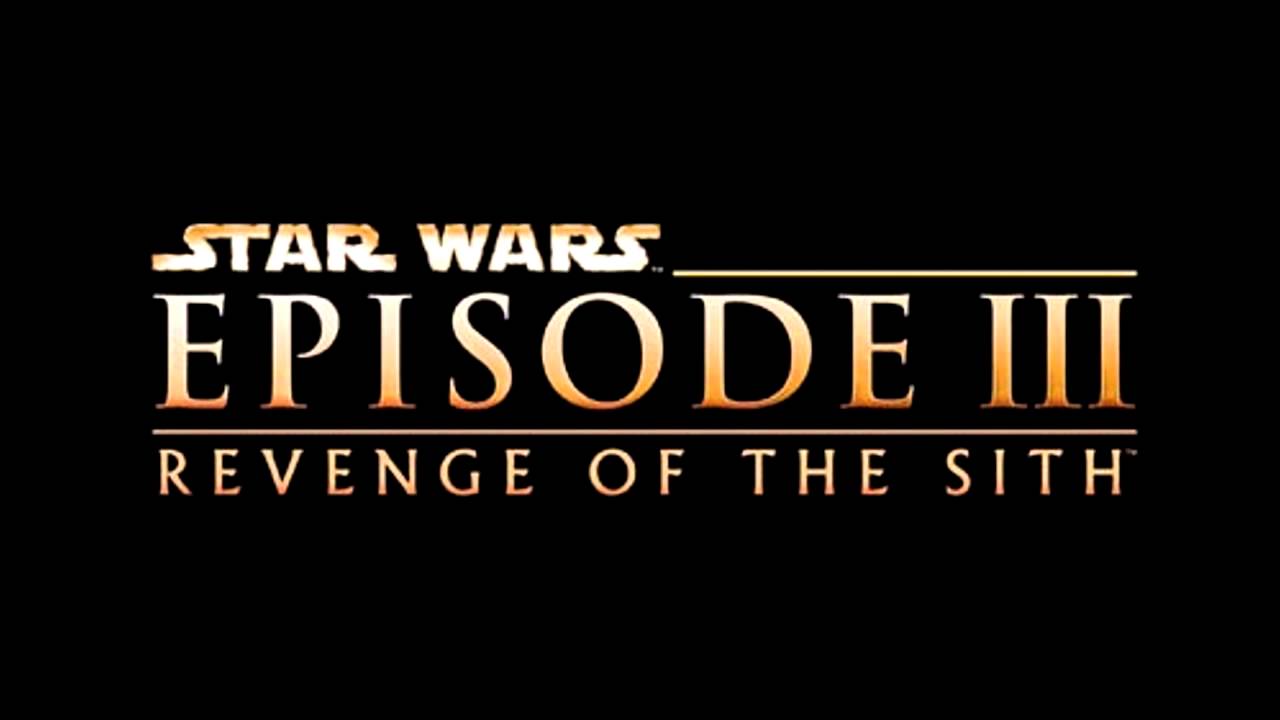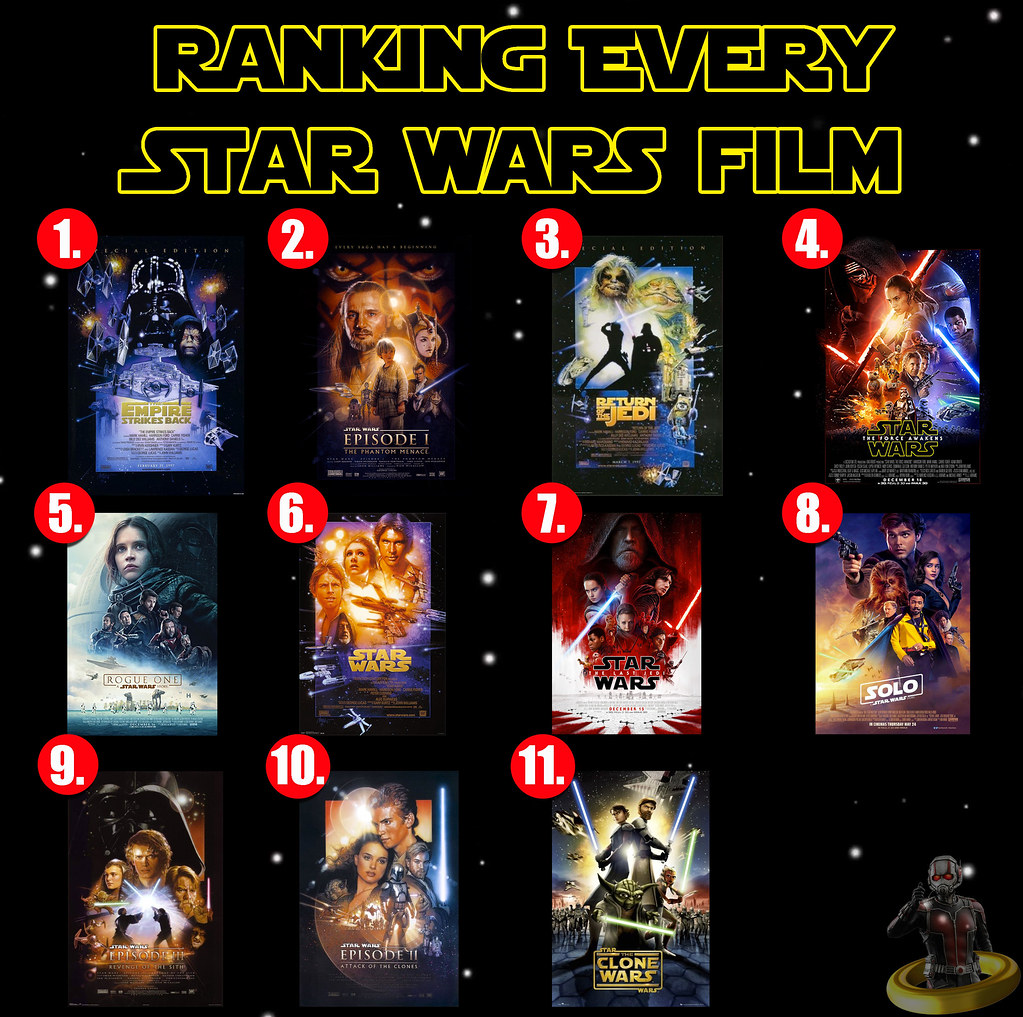The main plot of the story is how Anakin falls to the dark side and the fall of the republic and the jedi. That's fine and dandy, but this wasn't handled that well in the movie. Anakin's turn was way to rushed in the movie to be believable.
This is because too much time was spent on the action and the important stuff was glossed over in boring talking scenes. The book, especially with the jedi council scenes, flesh out the jedi point of view. They know that they are treading on dangerous ground but they also can't help it because they have to stop sidious.
Stover even opens with how the space battle affects regular people. The fear they all have, that they think the Republic is doomed. And that the kids are the ones who are comforting the parents because they know Obi Wan and Anakin will come to the rescue. This is so great because the kids are like the viewers of the films, who know the jedi will come do awesome stuff, while the parents show a side of war that we don't see in the movies that makes it more realistic and grim.
The original trilogy is largely character-driven blockbuster storytelling at its finest. Sure, we never get to see Luke — a farm boy with dreams of flying X-Wings — react the way real human beings would to not only seeing his dream come true, but realizing it while saving the galaxy from the Empire and their Death Star. But we do relate to his search to be something more, and, eventually, the struggle to figure how to master and accept what that new path has in store — with all the action and cool space stuff built on the backs of insanely likable and relatable characters. The prequels, on the other hand, are plot first, character distant second, the movie equivalent of Wookieepedia entries brought to life on a Hollywood blockbuster budget.
The characters are largely brand new, and that's fine, but they lack the inner life of their predecessors. In the original trilogy, Han, Leia and Luke had distinct ways of speaking and interacting with one another; they stood out and felt fully realized. Sithand the prequels in general introduce us to two trilogies' worth of new faces that are distinguished less by their unique personalities and more by, um, the color of their lightsaber. Their dialogue is easily interchangeable; any one of them could say the other's lines . Far and away the best of the prequel trilogy, I actually do just kind of overall enjoy this one in the larger Star Wars pantheon. While the CGI is way better than Episode I or II, there's a lot of times when it's still awkward and obvious.
Obi-Wan on a giant lizard will never look cool, as much as I really want that series of words to be awesome. At least in Episode I she was headstrong, and in Episode II she had some action hero in her. Here, she's just reduced to a pathetic woman sitting on the sidelines while the boys figure crap out around her. The action scenes are kind of forced in, and Anakin's ultimate turn to the dark side happens jarringly fast. There's also some things that I know are expanded in the larger universe but here just happen way too fast, like Order 66. But there are still enough improvements to make it warranted.
His dialogue is awful, and he still whines too much, but when he doesn't have to talk and just has to give that Dark Side glare he can actually be a little intimidating. There's some sequences, like the end with the parallel hospital imagery, that are definitely on the nose in symbolism but they still work. And the final battle between Anakin and Obi-Wan is still incredible. The Darth Maul fight was sleek, two opposing sides who knew what they stood for.
Here, there's so much raw emotion and power between the two and you feel it. I actually noticed this viewing you can see how Anakin is trying to kill, but Obi-Wan very much plays defensively most of the fight, and little touches like that make it all the more effective. And yeah, even when scenes are a little forced or underinformed, they can still work. The Order 66 sequence for example, even if it is abrupt, is still effective.
It's far from perfect, and its flaws stick out like a sore thumb, but I still enjoy it enough to have had a few viewings in the past and probably a few more in the future. On the other hand, I think the movie sucks compared to the original trilogy and The Force Awakens. Although not as awful as Menace or Clones, most of the dialogue is still pretty bad, and a lot of the delivery of these lines is dull and bland. Because of this, there is a long stretch of scenes between the epic opening space battle and the part where Obi Wan goes after Grievous that can be pretty hard to sit through. Honestly, I think the Opera House scene is overrated, mostly because I already get too bored from the other talking scenes that come before it to really be interested.
I find the characters to be pretty bland in this film too. Yeah the lightsaber battle between Obi Wan and Anakin is pretty good but it's only because of the flashy visuals, not because there's any tension. Many of the most important moments in the film (ie Anakin's turn to the dark side, the birth of Darth Vader) are botched by horrible dialogue and cringeworthy acting. Parents need to know that Revenge of the Sith is the third and final film in the Star Wars prequel trilogy and contains a few moments of graphic violence, as well as the transformation of a beloved character from good to bad. The movie chronicles the fall of Anakin Skywalker and his transformation into Darth Vader. The plot and characters grapple with some complicated moral issues and occasionally embrace shades of grey.
In a sequence of surprising detail for a Star Wars film, viewers see Anakin burn in a pit of lava, with his skin turning into cinders. We recommend extreme caution and consideration when deciding whether younger children can handle viewing something that's this emotionally and graphically violent. It is a lot better than Episodes 1 or 2, with fun action scenes, a wonderful score, great visuals, and a pretty strong story. The acting from Ewan McGregor and Ian McDiarmid is actually pretty solid in this movie and even Hayden Christenson's performance has its moments.
The lightsaber duel between Yoda and Sidious is one of my favorite action scenes in the saga. A video game based on the film was released on May 5, 2005, two weeks before the film. The game followed the movie's storyline, for the most part, integrating scenes from the movie.
However, many sections of the game featured cut scenes from the movie or entirely new scenes for the game. The style of the game was mostly lightsaber combat and fighting as Obi-Wan or Anakin/Vader. After his death, Vader kicks Obi-Wan's lifeless corpse down the black sand bank, grins, and walks off, as Palpatine arrives on Mustafar to congratulate Vader on his victory.
Vader proceeds towards Sidious' docked shuttle, and the new emperor declares the galaxy to belong to the both of them and gives Vader his new, red-bladed lightsaber. After quickly examining his new lightsaber, Vader ignites it and impales his Sith master, declaring the galaxy to belong only to him. The duel between Obi-Wan and Anakin is lengthened and is much more exaggerated. Aside from Anakin and Obi-Wan's duel, however, the final act is very compressed, especially in comparison to the opening space battle, which encompasses the first third of the book. The game followed the film's storyline for the most part, integrating scenes from the film. However, many sections of the game featured scenes cut from the film, or entirely new scenes for the game.
The style of the game was mostly lightsaber combat and fighting as Obi-Wan or Anakin. It also has a form of multiplayer mode, which includes both "VS" and "Cooperative" mode. In the first mode, two players fight with characters of their choice against each other in a lightsaber duel to the death.
In the latter mode, two players team up to combat increasingly difficult waves of enemies. These problems still exist within Stover's novel, of course, but I felt much more inclined to overlook them since – unlike when I watched Lucas' movie – I was enjoying myself reading it so much. In place of Lucas' lamentably sloppy direction we have a quality author at the top of his game who is able to paint the picture of a convincing and entertaining sci-fi opera with ridiculous ease. Within the first hundred pages, an extended sequence in which Anakin and Obi-Wan rescue Palpatine, kill Dooku and battle with General Grievous I felt completely immersed in the Star Wars universe in a way I hadn't since watching the original trilogy as a child.
When Anakin kills Dooku in the movie, Palpatine snarls and Anakin he simply kills Dooku (Lucas cuts away, of course, de-emphasizing the moment); it's just another run-of-the-mill action scene. When Anakin kills Dooku in the novel, there's drama and content. It feels hard fought, emotional and staggeringly important. Unlike other films in the series, the messages in this installment aren't quite as clear, perhaps because the storyline focuses so sharply on a leading character's fall from grace, so the movie must embrace shades of grey in terms of morality.
At the same time, the lines between good and evil are clearly defined, even if evil seems to win in the film's final act. If the strength of a franchise's legacy were defined by the number of memes it spawned, the Star Wars prequel trilogy would be among the most heralded works in the history of cinema. Far from having a limited shelf life, prequel memes have continued to thrive since the trilogy's release in the early 2000s—even evolving to make their way onto emerging platforms like TikTok. It's more like we've all come together to laugh and confess that we love trash at the altar of our lord and savior, George Lucas. Lucas stated that he conceived the Star Wars saga's story in the form of a plot outline in 1973.
However, he later clarified that, at the time of the saga's conception, he had not fully realized the details—only major plot points. The film's climactic duel has its basis in the Return of the Jedi novelization, in which Obi-Wan recounts his battle with Anakin that ended with the latter falling "into a molten pit". Lucas began working on the screenplay for Episode III before the previous film, Attack of the Clones, was released, proposing to concept artists that the film would open with a montage of seven battles on seven planets.
In The Secret History of Star Wars, Michael Kaminski surmises that Lucas found flaws with Anakin's fall to the dark side and radically reorganized the plot. For example, instead of opening the film with a montage of Clone War battles, Lucas decided to focus on Anakin, ending the first act with him killing Count Dooku, an action that signals his turn to the dark side. Palpatine tempts Anakin with his knowledge of the Force, including the dark side, and offers to teach him the power to prevent death in order to save Padmé's life. Anakin deduces that Palpatine is the Sith Lord behind the war and reports his treachery to Mace Windu, who confronts and subdues him. Desperate to save Padmé's life, Anakin severs Windu's hand before he can kill Palpatine, who sends Windu falling to his death.
Anakin pledges himself to the Sith, and Palpatine knights him Darth Vader. Palpatine issues Order 66, which commands the clone troopers to kill their commanding Jedi generals across the galaxy, while Vader and a battalion of clone troopers kill the remaining Jedi in the Jedi Temple. Vader then travels to Mustafar to assassinate the Separatist leaders, while Palpatine declares himself Emperor before the Galactic Senate, transforming the Republic into the Galactic Empire, and denounces the Jedi as traitors. Revenge of the Sith premiered on May 15, 2005, at the Cannes Film Festival, then released worldwide on May 19, 2005. It broke several box office records during its opening week and went on to earn over $868 million worldwide, making it the second-highest-grossing film in the Star Wars franchise at the time.
It was the highest-grossing film in the U.S. and the second-highest-grossing film worldwide in 2005. The film also holds the record for the highest opening-day gross on a Thursday, making $50 million. Easily the most graphic, disturbing images come at the climax of Anakin's lightsaber duel with Obi-Wan. During an acrobatic attack, the older Jedi removes one of Anakin's arms and both legs below the knees in one fell swoop. Several scenes show Anakin's horribly charred body after he's "rescued" by the chancellor and reconstructed as Darth Vader.
Experience the heroic action and unforgettable adventures of Star Wars, the most iconic film series ever made – now available for the first time ever on stunning digital. Join the Jedi Knights, guardians of peace and justice in the Old Republic, on an epic journey to defeat the evil Empire and free the galaxy from the forces of darkness. Begin the saga with young Anakin Skywalker's descent to the dark side as he transforms from Jedi apprentice into ruthless Darth Vader. Then continue with Luke Skywalker, Princess Leia and Han Solo as they lead the Rebel Alliance in the fight to restore freedom to the galaxy. The wait is over – the Star Wars Digital Movie Collection has arrived! Another thing that's noticeable about the structure of the book is that Stover weights the beginning and middle of the story far heavier than the end.
This might raise eyebrows, if you're thinking that surely the final duels from the film should be the climax of the story and have the most attention lavished upon them. Anakin's seduction is the meat of the story, and requires the most development to feel plausible; after all, a character changing sides from good to evil, doing a complete 180, this is the kind of pivot that needs to earn its payoff through being built up. The expansion of the opening battle was appreciated too, particularly as it gives Dooku the kind of development he really needed but never got in either Attack of the Clones or Revenge of the Sith.
Stover throws in some very nice links with classic Empire era as well, through Dooku's human-centric prejudices, and Palpatine's imposition of system governors – this feels more like original Star Wars than any of the prequel novels have before. He even rescues Padme's lack of agency by getting her a lot more involved in the politics of Palpatine's rise, which gives even more substance to Anakin's fears about her getting in to some kind of trouble. I like how Stover is able to take the perfect amount of time to describe the action scenes, and rather than using more words to recapture the exact visuals of the movie, explain why they are important. In the book, we learn that the fight was much more than that.
With this read through, I found the Grievous chase to be weaker than I remembered. It's not anywhere near awful, but after being engrossed by the way Stover expertly handled just about everything else, the Grievous battle was underwhelming. In terms of Stover's writing, I think this is the weakest part of the book.
The chapter ended with a really strong paragraph, but the rest was kind of dull. People seem much more divided on this film than any of the other Star Wars movies. One group says that it's garbage, and that it's just as horrible as the other two star wars prequels. Just as many people seem to love Revenge of the Sith and insist its as good, or better, than the original trilogy. They insist that the film is unfairly hated because it's part of the prequels.
Then there seems to be a large group of people who fall somewhere in between. Darth Sidious sends Anakin/Vader to the volcano planet Mustafar to eliminate the separatist leaders. Padme can't believe Anakin has turned to the Dark Side and follows him to Mustafar.
Padme confronts Anakin, but he believes she has betrayed his love. In a fit of jealousy, he uses the force to strangle her into unconsciousness. Their battle continues across the volcanic surface of Mustafar until Obi-Wan finally defeats Anakin. At the same time, Darth Sidious and Yoda fight their own battle. Yoda can't defeat Darth Sidious, and he and Obi-Wan are forced into exile.
As with other entries in the series, the violence in this film is primarily centered around sci-fi battles in space and characters using blasters and laser swords. But there are a few powerful moments of specific violence -- for example the off-screen death of children and the beheading of a central villain. Perhaps most graphic is the final visual transformation of the film's hero into an iconic villain, which begins with the character burning on screen in a lava pit before being grafted to robotic arms and legs, all while visibly squirming and screaming in pain. It's a disturbing sequence; only you know if your kids are ready to experience it.
























